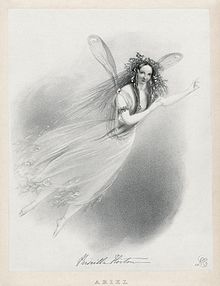Annotation:Sylph (The): Difference between revisions
No edit summary |
m (Text replacement - "Century Gothic" to "sans-serif") |
||
| Line 1: | Line 1: | ||
__NOABC__ | __NOABC__ | ||
<div class="noprint"> | <div class="noprint"> | ||
<p><font face=" | <p><font face="sans-serif" size="4"> Back to [[{{BASEPAGENAME}}]] </font></p> | ||
</div> | </div> | ||
---- | ---- | ||
| Line 7: | Line 7: | ||
---- | ---- | ||
<div style="page-break-before:always"></div> | <div style="page-break-before:always"></div> | ||
<p><font face=" | <p><font face="sans-serif" size="2"> | ||
<div style="text-align: justify; direction: ltr; margin-bottom: 90px; margin-left: 70px; margin-right: 120px;"> | <div style="text-align: justify; direction: ltr; margin-bottom: 90px; margin-left: 70px; margin-right: 120px;"> | ||
<br> | <br> | ||
| Line 17: | Line 17: | ||
</font></p> | </font></p> | ||
<div class="noprint"> | <div class="noprint"> | ||
<p><font face=" | <p><font face="sans-serif" size="2"> '''Additional notes''' </font></p> | ||
<p><font face=" | <p><font face="sans-serif" size="2"> | ||
<font color=red>''Sources for notated versions''</font>: - a c. 1837-1840 MS by Shropshire musician John Moore [Ashman]; the 1823-26 music mss of papermaker and musician Joshua Gibbons (1778-1871, of Tealby, near Market Rasen, Lincolnshire Wolds) [Sumner]. | <font color=red>''Sources for notated versions''</font>: - a c. 1837-1840 MS by Shropshire musician John Moore [Ashman]; the 1823-26 music mss of papermaker and musician Joshua Gibbons (1778-1871, of Tealby, near Market Rasen, Lincolnshire Wolds) [Sumner]. | ||
<br> | <br> | ||
<br> | <br> | ||
</font></p> | </font></p> | ||
<p><font face=" | <p><font face="sans-serif" size="2"> | ||
<font color=red>''Printed sources''</font> : - Ashman ('''The Ironbridge Hornpipe'''), 1991; No. 2a, p. 1. Callaghan ('''Hardcore English'''), 2007; p. 64. '''Hardings All Round Collection''', 1905; No. 46, p. 14. Sumner ('''Lincolnshire Collections, vol. 1: The Joshua Gibbons Manuscript'''), 1997; pp. 55 (set for three instruments) & 71.<br> | <font color=red>''Printed sources''</font> : - Ashman ('''The Ironbridge Hornpipe'''), 1991; No. 2a, p. 1. Callaghan ('''Hardcore English'''), 2007; p. 64. '''Hardings All Round Collection''', 1905; No. 46, p. 14. Sumner ('''Lincolnshire Collections, vol. 1: The Joshua Gibbons Manuscript'''), 1997; pp. 55 (set for three instruments) & 71.<br> | ||
<br> | <br> | ||
</font></p> | </font></p> | ||
<p><font face=" | <p><font face="sans-serif" size="2"> | ||
<font color=red>''Recorded sources'': </font> <font color=teal> - Topic 12TS283. Topic TSCD 669, Billy Ballentine (et al) – “Ranting and Reeling: Dance Music of the north of England” (1998. Billy Ballentine (born c. 1890’s) was a shepherd, and a piccolo and concertina player from Simmonburn Common, near Wark, Northumberland).</font> | <font color=red>''Recorded sources'': </font> <font color=teal> - Topic 12TS283. Topic TSCD 669, Billy Ballentine (et al) – “Ranting and Reeling: Dance Music of the north of England” (1998. Billy Ballentine (born c. 1890’s) was a shepherd, and a piccolo and concertina player from Simmonburn Common, near Wark, Northumberland).</font> | ||
</font></p> | </font></p> | ||
<br> | <br> | ||
---- | ---- | ||
<p><font face=" | <p><font face="sans-serif" size="4"> Back to [[{{BASEPAGENAME}}]] </font></p> | ||
</div> | </div> | ||
__NOEDITSECTION__ | __NOEDITSECTION__ | ||
__NOTITLE__ | __NOTITLE__ | ||
Revision as of 20:04, 6 May 2019
X: 1 C:Page 28 T:Self [2]. MBe.55, The S:Matthew Betham MS, Towcett Cumbria, 1815 O:England;Cumbria;Towcett Z:VMP - Hugh Taylor, 2012 T:Sylph,aka. MBe.55, The M:6/8 L:1/8 Q:3/8=120 R:.Jig N:Someone has written in a different hand alongside the title, "Sylph" N:Sylph is a mythological creature in the Western tradition, associated with invisible beings/Fairies etc N:A reference that may be of interest. "More than 40 members of [the] Lakeland Dialect Society attended the N:first meeting of the year, at Greenodd, near Ulverston. Miss Clara Boyle, of Ambleside, pressed for the N:inclusion of Cumbrian dances and eventually in 1932 the Westmorland Six Reel was accepted, however it was N:renamed 'The Sylph.' much to the disgust of a man from Bowness who wrote a letter of protest in dialect to N:The Westmorland Gazette" [the local weekly newspaper]. K:D A|AFA dfa|agf e2 g|fag fed|cee e2 A| AFA dfa|agf e2 g|fad egA|edd d3:| |:g|fad' d'c'b|bag f2 d|fad fad|cee e2 g| fad' d'c'b|bag f2 d|fad egc|edd d3:|
SYLPH, THE. AKA and see "Plymouth Lasses," “Self (2) (The).” English, Jig (6/8 time). D Major (Hardings): C Major (Ashman). Standard tuning (fiddle). AABB. A sylph was a kind of fairy; winged, kindly disposed to humans, often depicted as tiny cherubs. The title, however, is probably derived from a pantomime called The Sylphs; or, Harlequin’s Gambols, staged at Covent Garden in 1774. The music for the production was by John Abraham Fisher (1744-1806), an English violinist and composer who began his career playing in London theatre orchestras, but who rose quickly to lead the Covent Garden orchestra (from c. 1769-1778). He wrote for the theatre, composed violin pieces, six symphonies and an oratorio, and also penned popular pleasure-garden songs. For a time he led the Vauxhall Garden orchestra.

The melody appears in a number of 19th century English musician’s manuscripts under titles such as “The Self” (Joshua Gibbons,a miss-hearing of 'Sylph'), “The Sylph” (John Clare, John Moore), “The Cylph Dance,” etc., in a variety of keys. Moore gives the alternate title “Plymouth Lasses.” The jig also appears in the music manuscripts of Lionel Winship (Wark, Northumberland, 1833), Rev. Robert Harrison (Brampton, Cumbria, 1820), John Rook (Cumbria, 1840), John Moore (Tyneside, 1841), the Hardy family (Dorset), William Calvert (Leyburn, north Yorkshire, 1812), John Baty (Bethel, Northumberland, 1840-60), Thomas Lambert (Ferrybridge, Yorkshire) and C.J. Surtees (Northumberland). In America the tune was published in Willig’s Collection of Popular Country Dances, No. 3 (Philadelphia, Pa., 1812), and dance instructions were given in a few other publications.
